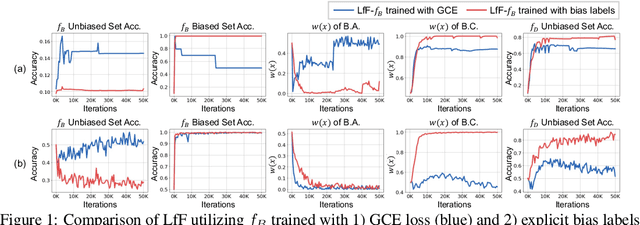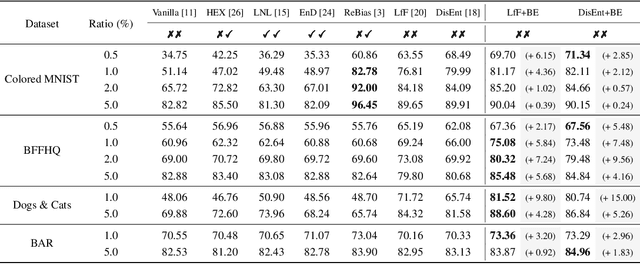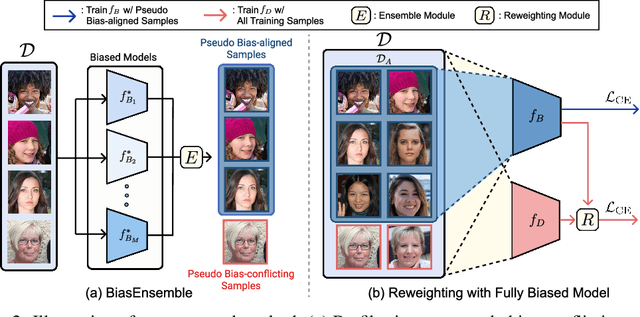BiasEnsemble: Revisiting the Importance of Amplifying Bias for Debiasing
Paper and Code
May 29, 2022



In image classification, "debiasing" aims to train a classifier to be less susceptible to dataset bias, the strong correlation between peripheral attributes of data samples and a target class. For example, even if the frog class in the dataset mainly consists of frog images with a swamp background (i.e., bias-aligned samples), a debiased classifier should be able to correctly classify a frog at a beach (i.e., bias-conflicting samples). Recent debiasing approaches commonly use two components for debiasing, a biased model $f_B$ and a debiased model $f_D$. $f_B$ is trained to focus on bias-aligned samples while $f_D$ is mainly trained with bias-conflicting samples by concentrating on samples which $f_B$ fails to learn, leading $f_D$ to be less susceptible to the dataset bias. While the state-of-the-art debiasing techniques have aimed to better train $f_D$, we focus on training $f_B$, an overlooked component until now. Our empirical analysis reveals that removing the bias-conflicting samples from the training set for $f_B$ is important for improving the debiasing performance of $f_D$. This is due to the fact that the bias-conflicting samples work as noisy samples for amplifying the bias for $f_B$. To this end, we propose a novel biased sample selection method BiasEnsemble which removes the bias-conflicting samples via leveraging additional biased models to construct a bias-amplified dataset for training $f_B$. Our simple yet effective approach can be directly applied to existing reweighting-based debiasing approaches, obtaining consistent performance boost and achieving the state-of-the-art performance on both synthetic and real-world datasets.
 Add to Chrome
Add to Chrome Add to Firefox
Add to Firefox Add to Edge
Add to Edge